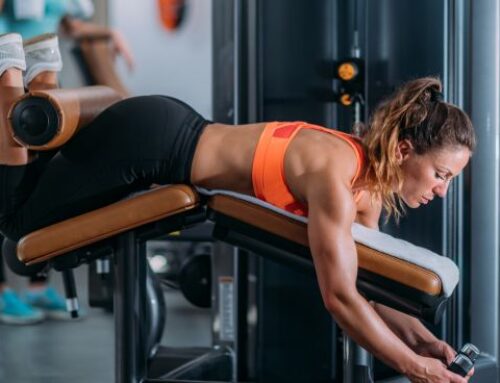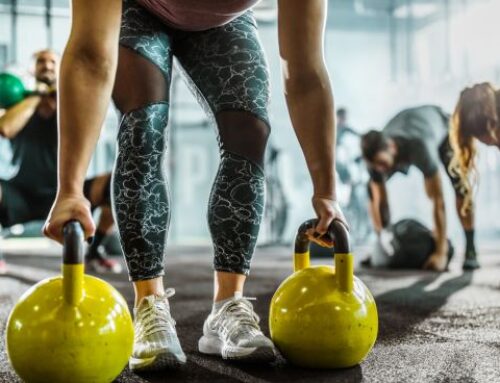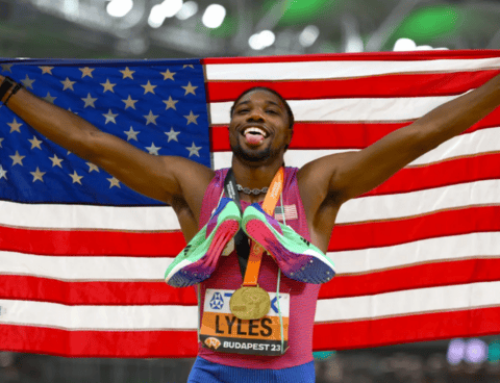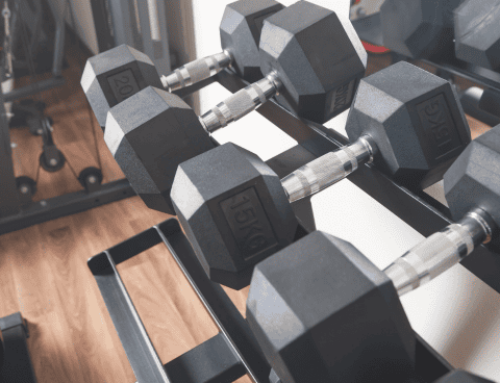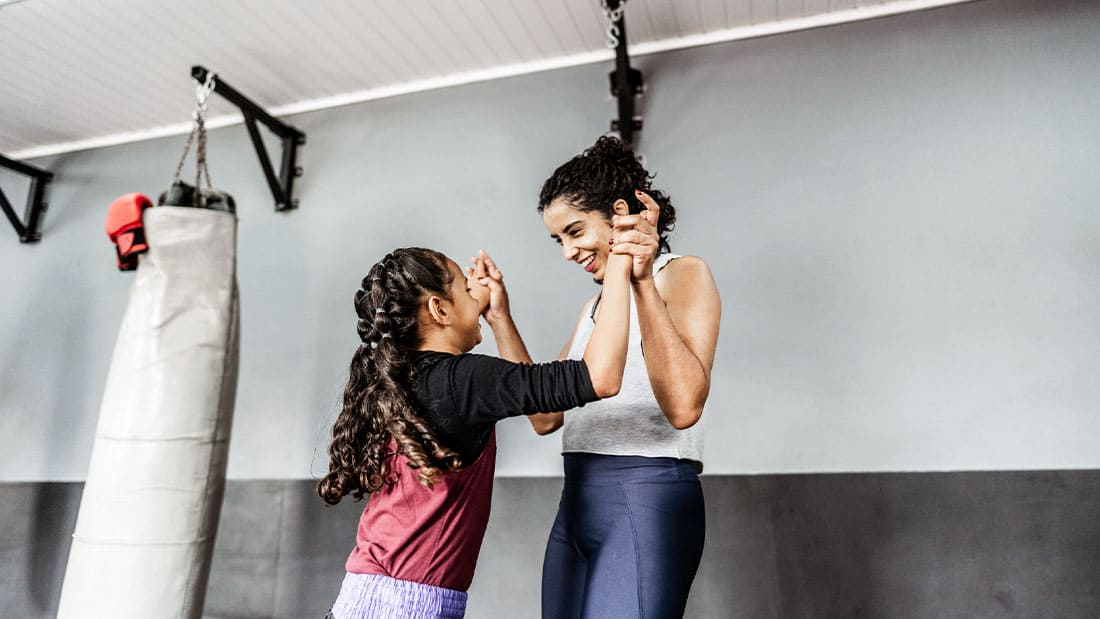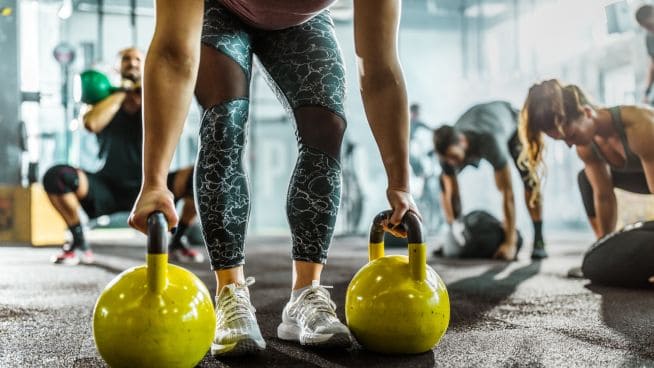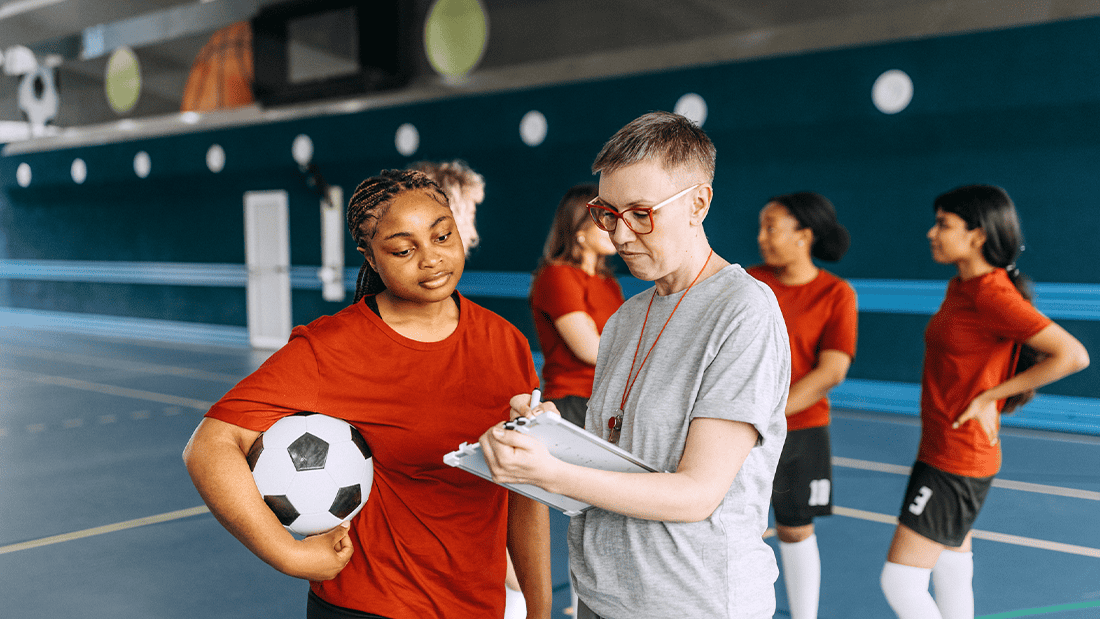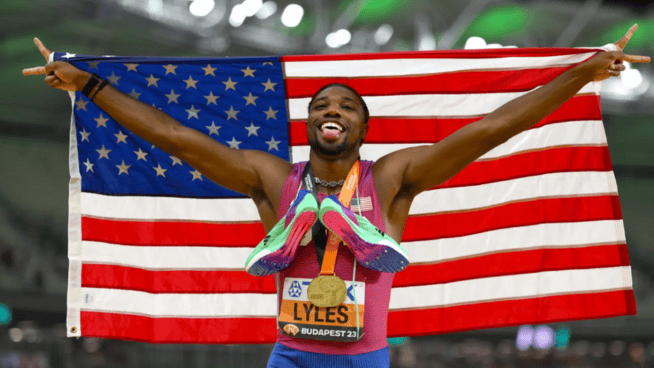Why the Best Distance Runners ‘Train Like Athletes’
At his home on the beaches of Portsea, Australia, Percy Cerutty created one of the most innovative training camps in running history.
Cerutty’s camp produced elite athletes. Most notably, Herb Elliott, who came to Cerutty a 4:20 miler and left an undefeated Olympic champion.
Like many of Cerutty’s philosophies, the training camp at Portsea was considered unorthodox at the time. As in most decades, the training of the current champions was the en vogue way to go about business.
British coach Franz Stampfl, who coached Roger Bannister to the first sub four-minute mile, was a proponent of interval training. Across the sea, New Zealander Arthur Lydiard’s Olympic medalists were known for running over 100 miles per week during one phase of training, and then bounding up hills the next.
But Cerutty’s methods were different.
Cerutty aimed to improve all aspects of the athlete, not just the aerobic engine.
Instead, Cerutty crafted a system that addressed multiple skills to develop the whole athlete, not just the runner. The eclectic coach led his pupils through intensive weight-training sessions, sprints up steep sand dunes, barefoot running along the beach, soaks in the ocean, and preached a clean and healthy lifestyle.
In the book, Training with Cerutty, Larry Myers wrote, “Percy Cerutty was the first athletic coach in history to advocate that heavy lifting is an essential part of developing the distance runner.”
Needless to say, Percy Cerutty had athletic development for distance runners figured out a half-century ago.
The Biomotor Skills
Exercise scientists have long proclaimed lactate threshold, VO2 max and running economy as the Holy Trinity of endurance training. In a nutshell, workouts in these categories improve stamina and have proven, measurable connections to endurance performance. These workouts build the engine of a distance runner.
Although variables like lactate threshold and VO2 max can be trained and developed, actual race performance hinges on an interconnected system of traits known as biomotor skills.
Especially at developmental levels, such as high school running, biomotor skill training is essential to create a base of skills through which endurance performance can thrive.
The five basic biomotor skills are:
- Endurance
- Speed
- Strength
- Coordination
- Flexibility/Mobility
Although distance runners will spend most of their training minutes in the endurance category, all of the other biomotor skills play an important role in performance, and perhaps most importantly, resistance to injury.
Though there is an infinite variety of methods to train each biomotor skill, developing athletes only need to master the basics. Fundamentals trump fancy.
Simple Speed
I believe speed training needs to be treated like salt on food for endurance athletes. A little bit is enough; too much ruins the meal.
This might sound obvious, but the best way to develop speed is to sprint. As with endurance training, there is a lot of nuance to training speed. Workouts range from ultra-short acceleration development to longer, speed endurance work.
Although many coaches and runners think of anything faster than the typical endurance run as “speed training,” that is not correct.
True, max speed development only occurs at near-max or max speeds, which for a high school distance athlete, will be sprints of plus or minus 5 seconds. Practically, this translates into max sprints in the 30- to 50-meter range. Since this work will likely be paired with endurance training, repetitions only need to be in the 4-6 range.
When sprinting, it’s imperative to think like a sprinter, not a distance runner.
Requirements for building speed call for full rest between sprint bouts to give a repeatable max effort. Distance runners who are used to active, jogging recoveries on intervals and repetitions will find max speed development…easy. When compared with typical endurance workouts, speed training should feel “easy” and not taxing. The purpose of speed training is to develop the max speed of a sprinter, and the best way to accomplish this goal is with short sprints and long rest.
Following a short endurance run, a sample speed session for a high school distance runner would be something along the lines of 5x40m meter sprints with 2-3 minutes rest.
Simple Strength
In the book Essentialism: The Disciplined Pursuit of Less, author Greg McKeown coined the mantra “less, but better”; and “less, but better” is exactly how strength training for developing distance runners should be carried out.
As strength and conditioning guru James Ratcliffe explains in his book, Functional Training for Athletes at all Levels, strength training can be filed into three basic movement categories: push, pull and squat. Selecting exercises in these movement domains will ensure a strong, balanced athlete who can produce more force into the ground and better resistance to injury.
Since many high school distance runners will be new to resistance training, it’s best to embark on strength training with bodyweight work, and then progress to light resistance, followed by traditional barbell training.
The following progression balances push, pull and squat exercises starting with bodyweight exercises and culminating with heavier barbell work.
* Sessions are limited to 4-6 exercises and the frequency is twice per week.
Bodyweight Phase (4-6 weeks)
Details: 2 sets of 10-20 reps using just body weight as resistance
- Bodyweight Squats
- Push-Ups
- Bodyweight Lunges
- Single-Leg Glute Bridge
- Squat Jumps
Light Resistance (4-6 weeks)
Details: 3 sets of 8-10 reps using a kettlebell or dumbbell
- Goblet Squat
- Overhead Press
- Single-Leg RDL
- Overhead Lunges
- Split Jumps
Traditional Max Strength (4-6 weeks)
Details: 3-4 sets of 4-6 reps using primarily barbells
- Back Squat
- Squat Jumps
- Push-Press
- Trap Bar Deadlift
- Split Jumps
Simple Mobility
Most runners and coaches are familiar with Jay Johnson’s Lunge Matrix and Leg Swing routine.
This routine takes runners through lunges that hit all planes of motion and use rotation at the torso on some of the lunges. Johnson also prescribes the hurdle trail-leg motion and leg swings that use a dynamic, swinging motion in the sagittal and transverse planes to open up range of motion in the hips.
We use a simple, modified version of Jay Johnson’s Lunge Matrix before each run to increase mobility in the muscles used in running.
Pre-Run Mobility Routine
Lunges (3 repetitions per leg per exercise)
- Forward with a side-to-side twist
- Right and Left Sides
- Backward
Leg Swings (10 repetitions each)
- Front to back
- Side to Side
- Hurdle Mobility (5 repetitions each direction)
- “Trail-leg” Forward
- “Trail-leg” Backward
In addition to traditional mobility work, a hidden gem within strength training is that correct movement patterns can also help increase the mobility of a distance runner. I can’t think of many better methods to increase range of motion in hip, knee and ankle joints than a deep squat.
Simple Coordination Training
If you are sprinting and following a well-balanced strength training program, you are already building the brain-muscle connections that affect coordination.
Additionally, warm-up routines for primary workouts and races can also be used to fine-tune coordination as well as touch on mobility and even speed and strength, depending on the goals of the session.
Although there are infinite combinations of drills that can be used in dynamic warm-up routines, it’s useful to include drills that include a variety of planes of motion. In layman’s terms, make sure you’re going forward, backward and side to side.
Dynamic warm-ups are also the perfect time to include skips, such as the A and B Skip series. Skipping is an excellent coordination exercises and offers a good supplement to sprint and plyometric work.
This sample dynamic warm-up routine can be used to prime coordination before a workout or race.
Pre-Workout or Race Dynamic Warm-up
2×20 meters on each of the following:
- A-Skip
- B-Skip
- Backward Walk
- Backward Skip
- Carioka
- Side Shuffle with arm swings
- High Knees (quick)
- Butt Kicks (quick)
Simple Programming
Haphazardly inserting biomotor skill training into the distance athlete’s training plan can be just as ineffective as not training these athletic skills at all.
Scheduling too many intense days in succession or too much in one day, regardless of the biomotor skill stimuli, can be a disaster waiting to happen.
In a 2005 study by Chtara, et. al, endurance runners who implemented strength training after an endurance session had ~20 second more improvement on a 4k time trial compared to runners that did strength training before their endurance runs. The improvement was even larger compared to samples in the study who only trained strength or endurance training.
The following is an example of how a coach or runner can optimize biomotor skill training into the weekly training cycle.
Monday
- Pre-Run Mobility
- Short Endurance Run
- Speed Training
Tuesday
- Dynamic Warm-Up
- Lactate Threshold Training
- Strength Training
Wednesday
- Pre-Run Mobility
- Recovery Running
Thursday
- Pre-Run Mobility
- Short Endurance Run
- Speed Training
Friday
- Dynamic Warm-Up
- VO2 Max or Race Pace Training
- Strength Training
Saturday
- Pre-Run Mobility
- Long Endurance Run
Sunday
- Rest
Final Considerations
At the high school level, it’s important to implement biomotor skill training, even for distance runners. Balanced training that addresses not only endurance but also speed, strength, mobility and coordination is an investment in future success.
Most runners seem to do a nice job with endurance training, but as Cerutty taught us over a half-century ago, it’s the distance runners who train like true athletes who often end up on top.
References
Chtara, et. al. “Effects of intra-session concurrent endurance and strength training sequence on aerobic performance and capacity.” Br J Sports Med. 2005 Aug;39(8):555-60.
Johnson, J. “The necessary warm-up for runners.” Retrived from https://coachjayjohnson.com/necessary-warm-up-for-runners/
McKeown, Greg. “Essentialism the disciplined pursuit of less.” Crown Business, 2014.
Meyes, L. Training with Cerutty. Anderson World, 1978.
Radcliffe, James. Functional Training for Athletes at All Levels. Ulysses Press, 2007.
Photo Credit: epicurean/iStock
RECOMMENDED FOR YOU
MOST POPULAR
Why the Best Distance Runners ‘Train Like Athletes’
At his home on the beaches of Portsea, Australia, Percy Cerutty created one of the most innovative training camps in running history.
Cerutty’s camp produced elite athletes. Most notably, Herb Elliott, who came to Cerutty a 4:20 miler and left an undefeated Olympic champion.
Like many of Cerutty’s philosophies, the training camp at Portsea was considered unorthodox at the time. As in most decades, the training of the current champions was the en vogue way to go about business.
British coach Franz Stampfl, who coached Roger Bannister to the first sub four-minute mile, was a proponent of interval training. Across the sea, New Zealander Arthur Lydiard’s Olympic medalists were known for running over 100 miles per week during one phase of training, and then bounding up hills the next.
But Cerutty’s methods were different.
Cerutty aimed to improve all aspects of the athlete, not just the aerobic engine.
Instead, Cerutty crafted a system that addressed multiple skills to develop the whole athlete, not just the runner. The eclectic coach led his pupils through intensive weight-training sessions, sprints up steep sand dunes, barefoot running along the beach, soaks in the ocean, and preached a clean and healthy lifestyle.
In the book, Training with Cerutty, Larry Myers wrote, “Percy Cerutty was the first athletic coach in history to advocate that heavy lifting is an essential part of developing the distance runner.”
Needless to say, Percy Cerutty had athletic development for distance runners figured out a half-century ago.
The Biomotor Skills
Exercise scientists have long proclaimed lactate threshold, VO2 max and running economy as the Holy Trinity of endurance training. In a nutshell, workouts in these categories improve stamina and have proven, measurable connections to endurance performance. These workouts build the engine of a distance runner.
Although variables like lactate threshold and VO2 max can be trained and developed, actual race performance hinges on an interconnected system of traits known as biomotor skills.
Especially at developmental levels, such as high school running, biomotor skill training is essential to create a base of skills through which endurance performance can thrive.
The five basic biomotor skills are:
- Endurance
- Speed
- Strength
- Coordination
- Flexibility/Mobility
Although distance runners will spend most of their training minutes in the endurance category, all of the other biomotor skills play an important role in performance, and perhaps most importantly, resistance to injury.
Though there is an infinite variety of methods to train each biomotor skill, developing athletes only need to master the basics. Fundamentals trump fancy.
Simple Speed
I believe speed training needs to be treated like salt on food for endurance athletes. A little bit is enough; too much ruins the meal.
This might sound obvious, but the best way to develop speed is to sprint. As with endurance training, there is a lot of nuance to training speed. Workouts range from ultra-short acceleration development to longer, speed endurance work.
Although many coaches and runners think of anything faster than the typical endurance run as “speed training,” that is not correct.
True, max speed development only occurs at near-max or max speeds, which for a high school distance athlete, will be sprints of plus or minus 5 seconds. Practically, this translates into max sprints in the 30- to 50-meter range. Since this work will likely be paired with endurance training, repetitions only need to be in the 4-6 range.
When sprinting, it’s imperative to think like a sprinter, not a distance runner.
Requirements for building speed call for full rest between sprint bouts to give a repeatable max effort. Distance runners who are used to active, jogging recoveries on intervals and repetitions will find max speed development…easy. When compared with typical endurance workouts, speed training should feel “easy” and not taxing. The purpose of speed training is to develop the max speed of a sprinter, and the best way to accomplish this goal is with short sprints and long rest.
Following a short endurance run, a sample speed session for a high school distance runner would be something along the lines of 5x40m meter sprints with 2-3 minutes rest.
Simple Strength
In the book Essentialism: The Disciplined Pursuit of Less, author Greg McKeown coined the mantra “less, but better”; and “less, but better” is exactly how strength training for developing distance runners should be carried out.
As strength and conditioning guru James Ratcliffe explains in his book, Functional Training for Athletes at all Levels, strength training can be filed into three basic movement categories: push, pull and squat. Selecting exercises in these movement domains will ensure a strong, balanced athlete who can produce more force into the ground and better resistance to injury.
Since many high school distance runners will be new to resistance training, it’s best to embark on strength training with bodyweight work, and then progress to light resistance, followed by traditional barbell training.
The following progression balances push, pull and squat exercises starting with bodyweight exercises and culminating with heavier barbell work.
* Sessions are limited to 4-6 exercises and the frequency is twice per week.
Bodyweight Phase (4-6 weeks)
Details: 2 sets of 10-20 reps using just body weight as resistance
- Bodyweight Squats
- Push-Ups
- Bodyweight Lunges
- Single-Leg Glute Bridge
- Squat Jumps
Light Resistance (4-6 weeks)
Details: 3 sets of 8-10 reps using a kettlebell or dumbbell
- Goblet Squat
- Overhead Press
- Single-Leg RDL
- Overhead Lunges
- Split Jumps
Traditional Max Strength (4-6 weeks)
Details: 3-4 sets of 4-6 reps using primarily barbells
- Back Squat
- Squat Jumps
- Push-Press
- Trap Bar Deadlift
- Split Jumps
Simple Mobility
Most runners and coaches are familiar with Jay Johnson’s Lunge Matrix and Leg Swing routine.
This routine takes runners through lunges that hit all planes of motion and use rotation at the torso on some of the lunges. Johnson also prescribes the hurdle trail-leg motion and leg swings that use a dynamic, swinging motion in the sagittal and transverse planes to open up range of motion in the hips.
We use a simple, modified version of Jay Johnson’s Lunge Matrix before each run to increase mobility in the muscles used in running.
Pre-Run Mobility Routine
Lunges (3 repetitions per leg per exercise)
- Forward with a side-to-side twist
- Right and Left Sides
- Backward
Leg Swings (10 repetitions each)
- Front to back
- Side to Side
- Hurdle Mobility (5 repetitions each direction)
- “Trail-leg” Forward
- “Trail-leg” Backward
In addition to traditional mobility work, a hidden gem within strength training is that correct movement patterns can also help increase the mobility of a distance runner. I can’t think of many better methods to increase range of motion in hip, knee and ankle joints than a deep squat.
Simple Coordination Training
If you are sprinting and following a well-balanced strength training program, you are already building the brain-muscle connections that affect coordination.
Additionally, warm-up routines for primary workouts and races can also be used to fine-tune coordination as well as touch on mobility and even speed and strength, depending on the goals of the session.
Although there are infinite combinations of drills that can be used in dynamic warm-up routines, it’s useful to include drills that include a variety of planes of motion. In layman’s terms, make sure you’re going forward, backward and side to side.
Dynamic warm-ups are also the perfect time to include skips, such as the A and B Skip series. Skipping is an excellent coordination exercises and offers a good supplement to sprint and plyometric work.
This sample dynamic warm-up routine can be used to prime coordination before a workout or race.
Pre-Workout or Race Dynamic Warm-up
2×20 meters on each of the following:
- A-Skip
- B-Skip
- Backward Walk
- Backward Skip
- Carioka
- Side Shuffle with arm swings
- High Knees (quick)
- Butt Kicks (quick)
Simple Programming
Haphazardly inserting biomotor skill training into the distance athlete’s training plan can be just as ineffective as not training these athletic skills at all.
Scheduling too many intense days in succession or too much in one day, regardless of the biomotor skill stimuli, can be a disaster waiting to happen.
In a 2005 study by Chtara, et. al, endurance runners who implemented strength training after an endurance session had ~20 second more improvement on a 4k time trial compared to runners that did strength training before their endurance runs. The improvement was even larger compared to samples in the study who only trained strength or endurance training.
The following is an example of how a coach or runner can optimize biomotor skill training into the weekly training cycle.
Monday
- Pre-Run Mobility
- Short Endurance Run
- Speed Training
Tuesday
- Dynamic Warm-Up
- Lactate Threshold Training
- Strength Training
Wednesday
- Pre-Run Mobility
- Recovery Running
Thursday
- Pre-Run Mobility
- Short Endurance Run
- Speed Training
Friday
- Dynamic Warm-Up
- VO2 Max or Race Pace Training
- Strength Training
Saturday
- Pre-Run Mobility
- Long Endurance Run
Sunday
- Rest
Final Considerations
At the high school level, it’s important to implement biomotor skill training, even for distance runners. Balanced training that addresses not only endurance but also speed, strength, mobility and coordination is an investment in future success.
Most runners seem to do a nice job with endurance training, but as Cerutty taught us over a half-century ago, it’s the distance runners who train like true athletes who often end up on top.
References
Chtara, et. al. “Effects of intra-session concurrent endurance and strength training sequence on aerobic performance and capacity.” Br J Sports Med. 2005 Aug;39(8):555-60.
Johnson, J. “The necessary warm-up for runners.” Retrived from https://coachjayjohnson.com/necessary-warm-up-for-runners/
McKeown, Greg. “Essentialism the disciplined pursuit of less.” Crown Business, 2014.
Meyes, L. Training with Cerutty. Anderson World, 1978.
Radcliffe, James. Functional Training for Athletes at All Levels. Ulysses Press, 2007.
Photo Credit: epicurean/iStock

